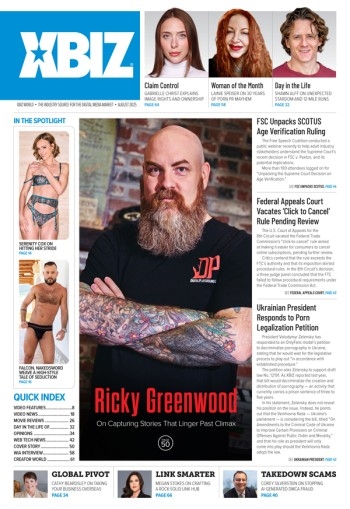JOPEN, the company that brought Vanity by JOPEN to the luxury pleasure products market, is set to release the long awaited Intensity by JOPEN in November.
Without a doubt, Intensity will change the way a woman looks at sex toys forever. Intensity was actually discovered as a by-product of a patented and FDA approved medical device.
The business of pleasure toys has evolved to the point that retail prices of $250 and above are not an obstacle to consumers, or retailers.
The medical company doing the clinical trials found their female test subjects reported an orgasm during testing, and stronger orgasms the more they used it. The medical device was created to help women strengthen their pelvic floor muscles for incontinence. To understand how a product like Intensity evolved in our realm, let’s take a short tour of other milestones over the last 40 years.
I’m sure you are now thinking “here we go again with that old back-in-theday crap” … but honestly, I would do a disservice not letting everyone know how things have changed, and in some respects, have stayed the same. We have all probably read about or have seen some really archaic vibrators that were sold by Sears, Roebuck and Co. in the early 1900s, but for all practical purposes, let’s start the technology lesson from the advent of the adult retail business in the U.S.
I always start a product presentation with the 1970 story about an ivory 7-inch and 10-inch vibrator as the only vibrating sex toys on the market. As basic as could be, these early imports from Hong Kong had a single on/off button in the base. An offset cam on the end of a simple rod extending from the cheapest of miniature motors banged around the inside of the plastic vibe at a pretty strong velocity, but without any multispeed capabilities, it was all or nothing! A small footnote at this point is that we were not only selling these prehistoric vibrators in the adult bookstores springing up in every city in the U.S., but also going to mainstream trade shows and selling to corner drugstores — the mainstream back then. Sound familiar?
The early adult bookstores carried imported vibrators in ivory, and then, are you ready, black, started filling the showcase at the checkout stand. The simple single-speed vibes were joined by the newest innovation, a multispeed version which was simply a rheostat on the battery case cap controlling how much battery power was sent to the motor. Since men were making the buying decisions back then, the single speed and the multispeed became price competitive. I can almost guarantee that women didn’t even know about multispeed vibrations until men actually took a moment to understand the difference, or simply, bought the more expensive one by mistake!
Fast forward through the 80’s where many different versions of vibrator models continued with bullets, stick vibes and several vibrating life-like dongs and vaginas. There was also a ton of non-vibrating dongs and vaginas. Credit is given to Doc Johnson in the late ’70s for developing the concept of carding these items for self service — a revelation that quickly pumped up the sales volume allowing manufacturers the cash flow to invest in new technologies. Through the ’80s and starting in the early ’90s, the adult toy and novelty business started attracting talented people with fresh new and exciting ideas.
Susan Colvin founded California Exotic Novelties in 1993 after working for an adult distribution company with a line of toys. She had a couple of years to study the market, and when the distribution company closed, she wanted to continue in the toy business. She felt that it was not only the toys that needed an upgrade, but also the mentality of the retailers to take a chance and try items in pink, purple and all the other colors of the rainbow … and guess what? After numerous trips in the field, selling, educating and basically begging, retailers finally listened and a new movement started away from men doing the shopping, to women now telling their partner what they want. This opened the door to not only colors, but multifunction, couples toys, rechargeable, solar powered, miniaturized motors, waterproof, remote control and phthalate-free materials, and the list goes on and on — all of which appealed to a woman’s sensibilities.
In the ‘90s the European Union imposed strict guidelines for the motors and wiring used in all miniaturized toys, home appliances, and, of course, sex toys. In order for American companies to sell their products to Europe, everyone had to conform to new standards. It not only made for a better and safer product, but it leveled the playing field among manufacturers. The result of that bit of regulation has led to the creation of new and exciting circuit boards, IC chips, and multifunction motors and controls that allow so many creative ways to satisfy women, men and couples around the world.
The business of pleasure toys has evolved to the point that retail prices of $250 and above are not an obstacle to consumers, or retailers — we live in a tech-savvy world, and for the handful of us who have seen the growth, it is just amazing. When Intensity was brought to JOPEN for consideration, we jumped in head first. The technology is a step ahead of what’s out there now, but having seen all that has gone by I believe that the next great idea is only an imagination away.







